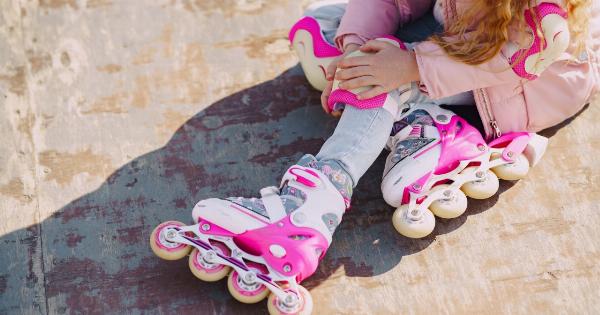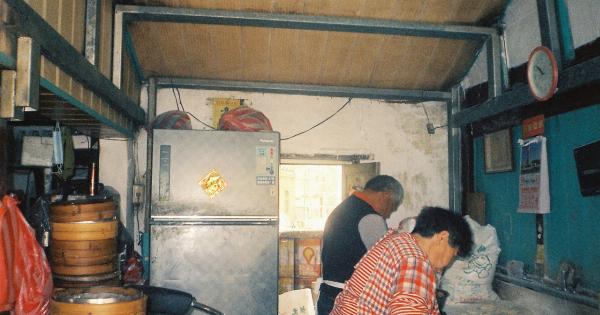Accidents can happen at any time, especially when it comes to children. As parents or caregivers, it is our responsibility to ensure the safety of our little ones and take necessary measures to prevent accidents from occurring.
However, despite all our efforts, accidents can still happen. In such instances, it is crucial to have knowledge of first aid techniques that can make a significant difference in minimizing injuries and even saving a child’s life.
In this article, we will discuss various pediatric accidents, prevention strategies, and first aid tips to equip you with the necessary knowledge to handle emergencies effectively.
1. Preventing Falls
Falls are one of the most common accidents that children experience, especially for toddlers and young children who are still developing their coordination and balance skills. To prevent falls, here are some essential tips:.
– Keep stairways and walkways clear of toys or other tripping hazards.
– Install safety gates at the top and bottom of stairs to prevent access.
– Use window guards or window stops to prevent falls from open windows.
– Never leave infants unattended on raised surfaces, such as changing tables or beds.
– Encourage your child to use handrails while navigating stairs or playground equipment.
2. Childproofing your Home
Childproofing your home is an essential step in preventing accidents. Here are some important measures to consider:.
– Install safety gates at the entrances to rooms with potential hazards, such as the kitchen or basement.
– Secure heavy furniture, such as bookcases and TV stands, to the wall to prevent tip-overs.
– Cover electrical outlets with safety plugs or outlet covers.
– Keep cleaning products, medications, and other hazardous substances out of reach and locked away.
– Use corner guards on sharp furniture edges to prevent injuries.
3. Road Safety
As children grow older, they may venture out and explore the world around them. Teaching road safety is crucial to prevent accidents. Here are some tips to keep children safe on the road:.
– Always supervise young children near roadways.
– Teach your child to look both ways before crossing the street.
– Use pedestrian crossings and traffic signals when available.
– Teach your child to never run out onto the road to retrieve a toy.
– Encourage your child to wear reflective clothing or accessories when walking or cycling in low light conditions.
4. Fire Safety
House fires pose a significant risk to children. Ensuring fire safety measures are in place can save lives. Here’s what you can do:.
– Install smoke detectors on every level of your home, especially near bedrooms.
– Test smoke detectors regularly and replace batteries as needed.
– Teach children about the dangers of fire and the “Stop, Drop, and Roll” technique if clothing catches fire.
– Create and practice a family fire escape plan, including a designated meeting point outside the home.
– Keep matches, lighters, and candles out of reach of children.
5. Preventing Choking
Choking is a common hazard for young children who are prone to putting small objects in their mouths. To prevent choking, follow these guidelines:.
– Cut food into small, bite-sized pieces for young children.
– Avoid giving young children hard or round foods that can easily get lodged in their throat, such as whole grapes or nuts.
– Keep small objects, such as coins, buttons, or small toys, out of reach of young children.
– Supervise children during meal and snack times.
– Learn how to perform the Heimlich maneuver on infants and older children.
6. First Aid for Cuts and Scrapes
Cuts and scrapes are common injuries among children, especially as they explore their environment and engage in physical activities. Here are the steps to follow for first aid:.
– Clean the affected area gently with mild soap and water.
– Apply an antiseptic ointment to prevent infection.
– Cover the wound with a sterile bandage or dressing.
– Change the dressing daily and watch for signs of infection, such as increasing redness or swelling.
– Seek medical attention if the wound is deep, bleeding heavily, or shows signs of infection.
7. First Aid for Burns
Burns can occur from contact with hot objects, liquids, or even chemicals. Knowing how to administer first aid for burns is crucial to minimize damage and promote healing:.
– For minor burns, hold the affected area under cool running water for at least 10 minutes to cool the burn and alleviate pain.
– Do not apply ice or iced water directly to a burn.
– Cover the burn with a clean, non-stick dressing or cloth.
– For severe burns, call emergency services immediately.
8. First Aid for Fractures and Sprains
Fractures and sprains can occur during physical activities or accidents. Immediate first aid can help alleviate pain and prevent further injury:.
– If a bone appears broken, do not move the child unless they are in immediate danger.
– Apply ice or a cold pack wrapped in a cloth to reduce swelling and pain.
– Immobilize the injured area using a splint or by supporting it with cushions or pillows.
– Seek medical attention as soon as possible.
9. First Aid for Insect Bites and Stings
Insect bites and stings can cause discomfort and, in some cases, an allergic reaction. Follow these steps for first aid:.
– Remove any visible stingers carefully using the edge of a credit card or your fingernail; do not use tweezers as it may squeeze more venom into the skin.
– Wash the affected area with soap and water.
– Apply a cold pack or ice wrapped in a cloth to reduce swelling and pain.
– Use over-the-counter creams or ointments to relieve itching or pain.
– If there are signs of an allergic reaction, such as difficulty breathing or swelling of the face, seek immediate medical attention.
10. First Aid for Heat-Related Illnesses
Heat-related illnesses, such as heat exhaustion and heatstroke, can be dangerous, especially for children. Knowing how to respond is vital:.
– Move the child to a shaded or air-conditioned area.
– Remove excess clothing and apply cool water to the skin or use cool, damp towels to lower body temperature.
– Encourage the child to drink cool fluids, such as water or a sports drink.
– If the child’s condition does not improve or worsens, seek medical attention immediately.
By being proactive in accident prevention and having knowledge of basic first aid techniques, you can create a safer environment for children to thrive.
However, it is essential to remember that in the case of a severe accident or uncertain situation, always seek immediate medical attention to ensure the well-being of the child.





























